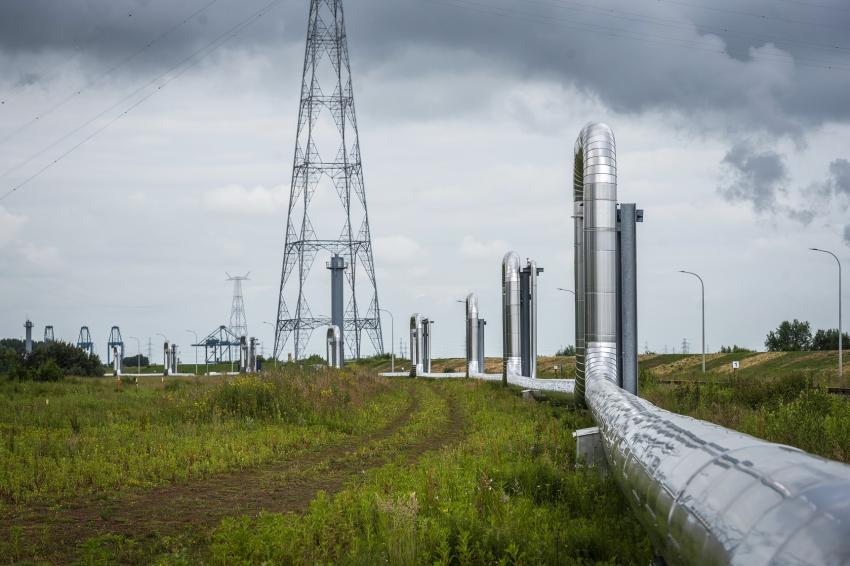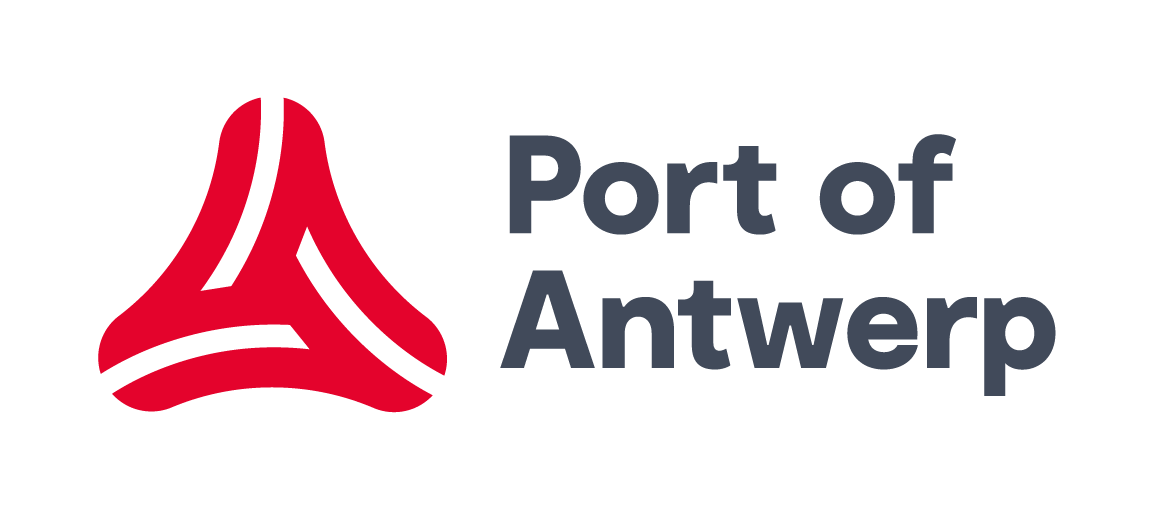The Port of Antwerp as an Energy Transition Pioneer
Taking the lead in the transition to a climate-neutral port
Cutting CO2 emissions in the port by half
The first step towards a climate-neutral future is to halve CO2 emissions. With this in mind, Port of Antwerp set up 'Antwerp@C', a consortium with its partners BASF, Ineos, Air Liquide, Borealis, ExxonMobile, Fluxys and Total, in order to investigate the technical and economic feasibility of a CO2 infrastructure for the capture and storage of carbon dioxide. In the future, the aim is to reuse this CO2 as a raw material in chemical production processes. Ships and pipelines transport unused CO2 to empty oil and gas fields.
Multi-fuel port reduces air pollution
Bunkering 6.5 million tonnes of conventional fuels a year, the port of Antwerp is the fifth-largest bunkering port in the world. Transitioning towards a multi-fuel port aims to reduce the shipping industry's impact on air pollution. Thanks to the new FlexFueler barge, LNG has been available as ship fuel throughout the port of Antwerp since March 2021. Using LNG reduces emissions of sulphur and particulates to negligible amounts. What is more, it also releases up to 85% fewer nitrogen oxides and considerably fewer greenhouse gases into the air.
In 2022, Port of Antwerp will launch the ‘Power-to-Methanol’ project. Methanol is an essential multi-purpose raw material for the chemical industry and has many other industrial applications besides. The power-to-methanol demo plant on the Antwerp INOVYN site will produce 8,000 tonnes of sustainable methanol. By combining captured CO2 with sustainably produced hydrogen, this production process avoids an equivalent quantity of CO2 emissions. “A milestone in sustainable methanol production in the port of Antwerp and an absolute first for Belgium,” emphasises Jacques Vandermeiren (CEO of Port of Antwerp). In the future, methanol will also serve as a form of sustainable fuel for tugboats and road traffic, for example.
By 2025, the growing LNG bunkering infrastructure at the port of Antwerp will be used for other types of carbon-neutral fuel, such as liquid biogas (from organic waste) or liquid synthetic methane (from green hydrogen and captured CO2). Both of these offer scalable solutions as that can be used as fuels in the maritime sector.
NextGen District: anchoring the circular economy
By creating the NextGen District, Port of Antwerp is reserving an 88-hectare business park for the commercial development of initiatives relating to the circular economy. In the NextGen District, all sizes of organisation, from large companies to start-ups, will have the chance to join forces. Through mutual cooperation, such as sharing a water treatment installation or exchanging residual products, a new cluster will be created in which end-of-life products are converted back into usable raw materials. Port of Antwerp is actively seeking companies to establish themselves on this site. The Port Authority will shortly be launching a new enquiry pack so that parties can apply.
PIONEERS consortium develops Green Port
In addition to these sustainable partnerships, Port of Antwerp is launching numerous other projects with the aim of achieving a climate neutral port. For example, the PIONEERS consortium, led by Port of Antwerp, received a grant of 25 million euros from the European Horizon 2020 programme.
PIONEERS is an international collaboration of forty-six partners that is developing solutions to reduce greenhouse gas emissions in European ports. The consortium is setting up nineteen pilot projects for the production and supply of green energy, sustainable port design, modal shift, optimisation of raw material flows and digital transition.
A large part of the pilot projects will take place in the port of Antwerp. In this way, Port of Antwerp will soon form a live example of what a Green Port will look like. The project will start at the end of 2021 and run for 5 years.
The sustainable ambitions of Port of Antwerp-Bruges
With the planned merger of the port of Antwerp and the port of Zeebrugge in 2022, Belgium's two main seaports are joining forces to become the ‘energy gateway to Europe’.
"On the coast is Zeebrugge, with its LNG port, while 80 kilometres away is Antwerp, with the largest chemical cluster in Europe. Connecting the two ports with pipelines for the transportation of CO2 and green hydrogen offers the opportunity to preserve existing industry in a sustainable way and to support the further development of the energy transition,” says Jacques Vandermeiren. “Not only will there be additional scope for customers to invest, but this will allow the development of a circular economy to be tackled more efficiently.”
Generating renewable energy on a large scale and importing, storing and converting alternative energy sources into sustainable building blocks for the chemical sector. This is another of the building blocks with which Port of Antwerp is striving to become the first European port to reconcile people, climate and economy.
Port of Antwerp is looking for innovators that come together to design, develop, and implement projects that set an example for real change. Moving from linear to circular. From using to renewing. Are you ready to join us? For more information on the NextGen District: NextGen District | Port of Antwerp
Sponsored by









